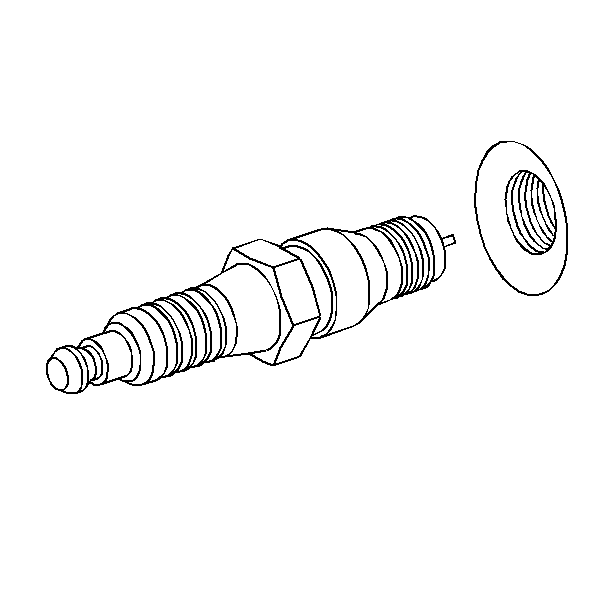Removal Procedure
- Turn OFF the ignition.
- Disconnect the spark plug wire harness from the spark plug.
- Remove the spark plug(s).
Caution: Wash your hands after handling coated spark plugs and before smoking. The coating is a non-hazardous material and incidental contact will not cause any adverse effects. However, exposure to polymer vapors - the result of contamination of cigarette products and subsequent burning of the polymer - may result in flu-like symptoms and should be avoided.
Important: Note the positions of the spark plug wire harnesses before removing them.
Important: Clean the dirt and the debris from the spark plug recess areas.

Installation Procedure
- Install the spark plugs.
- Connect the spark plug wire harness to the spark plugs. Ensure to properly route the harness as noted during the removal procedure.

Notice: Be sure the spark plug threads fit smoothly into the cylinder head and that the plug is fully seated. Use a thread chaser if necessary in order to clean threads in the cylinder head. Cross-threading or failing to fully seat the spark plug can cause overheating of the spark plug, exhaust blow-by, or thread damage. Follow the recommended torque specifications carefully. Over or under-tightening can also cause severe damage to the engine or spark plug.
Important: Check spark plug gap using a wire type gauge before installing. If spark plug gaps are not adjusted correctly, engine idle quality may be seriously affected. A wire type gauge must be used (as opposed to a flat feeler type gauge) to insure an accurate reading. For correct spark plug type and gap, refer to General Information.
Tighten
| • | Tighten the spark plugs to 30 N·m (22 lb ft) if the cylinder head is new. |
| • | Tighten the spark plugs to 20 N·m (15 lb ft) if the cylinder head is used. |
Notice: Use the correct fastener in the correct location. Replacement fasteners must be the correct part number for that application. Fasteners requiring replacement or fasteners requiring the use of thread locking compound or sealant are identified in the service procedure. Do not use paints, lubricants, or corrosion inhibitors on fasteners or fastener joint surfaces unless specified. These coatings affect fastener torque and joint clamping force and may damage the fastener. Use the correct tightening sequence and specifications when installing fasteners in order to avoid damage to parts and systems.
